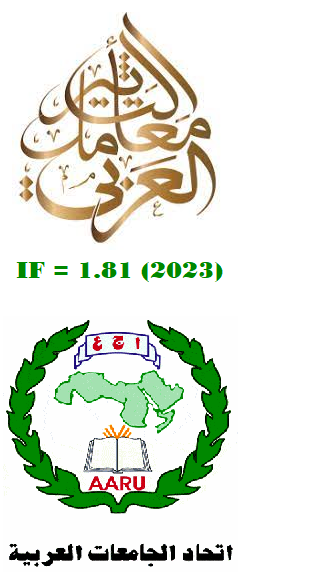The International Protection of Women in Armed Conflicts
Analytical Study
Abstract
The protection of women during armed conflicts has from time to time been a matter of concern to the international community in various forms and degrees. The laws of war have regulated the protection of women long before the Geneva Conventions and additional protocols system. The aim of this paper is to highlight the protection that women should be given in armed conflict, also taking into account their special needs.
Downloads
References
Additional Protocol I, (1977).
Additional Protocol II, (1977).
Aldrich, G. H. (2000). The law of war on land. The American Journal of International Law, 94(1), 42-63.
Aleshkina, M. (2016). Sexual Violence in Armed Conflict under International Law, Thesis. Oslo: University of Oslo.
Amnesty International. (2014). Escape from Hell: Torture and Sexual Slavery in Islamic State Captivity in Iraq. London: Amnesty International.
Beijing Declaration and Platform for Action. (1995). A/CONF.177/20, and A/CONF.177/20/Add.1. Available from: https://www.icsspe.org/system/files/Beijing%20Declaration%20and%20Platform%20for%20Action.pdf. [Last accessed on 2020 Jan 28].
Bennoune, K. (2007). Do we need new international law to protect women in armed conflict, case western reserve. Journal of International Law, 38, 363.
Bunga, G. A. (2017) The protection of women in armed conflict. Justitia Journal, 6(2), 15-18.
Callimachi, R. (2015). ISIS Enshrines a Theology of Rape. New York: The New York Times. Available from: https://www.nytimes.com/2015/08/14/world/middleeast/isis-enshrines-a-theology-of-rape.html. [Last accessed on 2020 Aug 13].
Corcoran, R. (2008). Justice for the forgotten: Saving the women of Darfur, 28 B.C. Third World Law Journal, 28, 1-6.
Dixit, R. K. (2000). Special protection of women during armed conflicts under the Geneva conventions regime. In: ISIL Yearbook of International Humanitarian and Refugee Law. Vol. 2. (pp. 147-148). New Delhi: The Indian Society of International Law.
Even Khen, H. B. M., & Frey, A. H. (2013). Silence at the Nuremberg Trials: The International military tribunal at Nuremberg and sexual crimes against women in the Holocaust. Womens Rights Law Reporter, 35, 24.
Final Report of the Commission of Experts Established Pursuant to Security Council Resolution, No. 780 (1992).
Fisher, S. K. (1996). Occupation of the womb: Forced impregnation as genocide. Duke Law Journal, 46(91), 91-133.
Fnish, N. M. N. (2013). Protecting Women under the International Humanitarian Law: A Study of the Social, Cultural, and Political Conditions in Iraq and Palestine that have an adverse effect on Women, Dissertation. San Francisco, California: Golden Gate University School of Law.
Gaggioli, G. (2014). Sexual violence in armed conflicts: A violation of international humanitarian law and human rights law. International Review of the Red Cross, 96, 503-538.
Gardam, J. (1997). Women and the law of armed conflict: Why the silence? International Comparative Law Quarterly, 46(1), 55-80.
Gardam, J. G., & Jarvis, M. J. (2011). Women, Armed Conflict and International Law. Hague, Netherland: Kluwer Law International Publisher.
Gardam, J., & Charlesworth, H. (2000). Protection of women in armed conflict. Human Rights Quarterly, 22(1), 146-166.
Gekker, E. (2014), Rape, sexual Slavery, and forced marriage at the international criminal Court: How Katanga utilizes a ten-year-old rule but overlooks new jurisprudence. Hastings Womens Law Journal, 25(1), 1-7.
Geneva Conventions I, (1949).
Geneva Conventions II, (1949).
Geneva Conventions III, (1949).
Geneva Conventions IV, (1949).
Greenwood, C. (1987). The concept of war in modern international law.International and Comparative Law Quarterly, 36(2), 283-306.
Grotius, H. (2005). The Rights of War and Peace Book III. Vol. 6. Indianapolis: Liberty Fund.
Guttry, A. C. F., & Paulussen, C. (2016). Foreign Fighters under International Law and Beyond. Netherland: Springer.
Hague Regulations, (1907).
Hassen, S. H. (2016). Investigating Sexual and Gender-Based Violence as a Weapon of War and a Tool of Genocide against Indigenous Yazidi Women and Girls by ISIS in Iraq, Thesis. Oregon: Oregon State University.
Ivanciu, C. (2016). The protection of women during armed conflicts. Scientific Research and Education in the Air Force Afases, 2, 2-3.
Krill, F. (1985). The protection of women in international humanitarian law. International Review of the Red Cross, 249, 337-363.
Lindsey, C. (2000). Women and war an overview. International Review of the Red Cross, 82, 561-580.
Lindsey, C. (2001). Women Facing War ICRC Study on the Impact of Armed Conflict on Women, Geneva, Switzerland: International Committee of the Red Cross.
Mccormack, T. H., & Kleffner, J. K. (2006). Year Book of International Humanitarian Law 278. Berlin: Springer.
Meron, T. (1993). Rape as a crime under international Humanitarian law. The American Journal of International Law, 87(3), 424-428.
Niarchos, C. N. (1995). Women, war, and rape: Challenges facing the international tribunal for the former Yugoslavia. Human Rights Quarterly, 17(4), 649-690.
Nkuanga, M. (2019). Protection of Women during an Armed Conflict. Available from: https://www.academia.edu/25491532/protection_of_women_during_an_armed_conflictsituation_in_Africa. [Last accessed on 2019 Dec 05].
O’Sullivan, C. (2011). Dying for the bonds of marriage: Forced marriages as a Weapon of genocide. Hastings Womens Law Journal, 22, 2-3.
Otunnu, O. A. (2002). Special Comment on Children and Security, Forum du Disarmament, No. 3. (pp. 3-4). Geneva: United Nations Institute for Disarmament Research.
Papyan, A. (2016). The Legal Basis for the Protection of Women in Armed Conflicts, Master Thesis. Yerevan: Yerevan State University.
Pictet, J. (1960). Geneva Convention for the Amelioration of the Condition of Wounded, Sick and Shipwrecked Members of Armed Forces at Sea. Geneva: International Committee of the Red Cross.
Prosecutor v Kunarac, Kovaĉ and Vuković. (2001). IT-96-23-T and IT-96-23/1-T (TC) (also known as ‘the Foca Case). International Tribunal for the Prosecution of Persons Responsible for Serious Violations of International Humanitarian Law Committed in the Territory of the Former Yugoslavia Since 1991. Available from: https://www.icty.org/x/cases/kunarac/tjug/en/kun-tj010222e.pdf. [Last accessed on 2020 Feb 01].
Prosecutor v Kunarac, Kovac and Vukovic. (2002). IT-96-23 and IT-96- 23/1-A, ICTY, Appeal Judgment, Para, No. 150. International Tribunal for the Prosecution of Persons Responsible for Serious Violations of International
Humanitarian Law Committed in the Territory of the Former Yugoslavia Since 1991. Available from: https://www.icty.org/x/cases/kunarac/acjug/en/kunaj020612e. pdf. [Last accessed on 2020 Feb 10].
Puechguirbal, N. (2009). Greater Need, Fewer Resources: Ensuring Adequate Health Care for Women during Armed Conflict. Geneva, Switzerland: International Committee of the Red Cross. Available from: http://www.icrc.org/web/eng/siteeng0.nsf/html/women-health-interview-010309. [Last accessed on 2019 Dec 25].
Qurashi, Z. (2013). Violence against women during armed conflicts. UK Law Students Review, 1(39), 24-25.
Roberts, A. (1990). Prolonged military occupation: The Israeli-occupied territories since 1967. The American Journal of International Law, 84(1), 44-103.
Rome Statute of the International Criminal Court. (1998).
Schindler, D. (1979). State of war, belligerency and armed conflict, in a Cassese. The New Humanitarian Law of Armed Conflict, 3(4), 3.
Schneider, M. D. (2007). About women, war and Darfur: The continuing quest for gender violence justice. North Dakota Law Review, 83, 915-996.
Schütte, R. (2015). Civilian Protection in Armed Conflicts Evolution, Challenges and Implementation. Berlin: Springer.
Sellers, P. V. (2000). The context of sexual violence: Sexual violence as violations of international humanitarian law. In: McDonald, G. K., & Goldman, O. S. (Eds.), Substantive and Procedural Aspects of International Criminal Law. The Hague: Kluwer Law International.
Sivakumaran, S. (2018). How do the Additional Protocols address the issue of sexual and gender-based violence in armed conflicts? In: Angeli, F. (Ed.), The Additional Protocols 40 Years Later: New Conflicts, New Actors, New
Perspectives. Sanremo, Italy: International Institute of Humanitarian Law.
Sudhakar, T. V. G. (2006). Protection of women during armed conflict: A survey of existing network of treat-customary law and practice. ISIL Yearbook of International Human and Refugee Law, 6, 279.
Than, C., & Shorts, E. (2003). International Criminal Law and Human Rights. United Kingdom, Thomson: Sweet and Maxwell.
UN, General Assembly, Doc. A/60/L.1. (2005). Para. 58(f). Available from: https://www.un.org/en/development/desa/population/migration/generalassembly/docs/globalcompact/A_RES_60_1.pdf. [Last accessed on 2020 Jan 27].
United Nations Assistance Mission for Iraq Human Rights Office, a Call for Accountability and Protection. (2016). Yezidi Survivors of Atrocities Committed by ISIL. UNIRAQ. Available from: https://www.ohchr.org/documents/Countries/IQ/UNAMIReport12Aug2016_en.pdf. [Last accessed on 2020 Jan 20].
United Nations, Security Council, S/PRST/2006/42. (2006). Available from: https://www.un.org/womenwatch/ods/S-PRST-2006-42-E.pdf. [Last accessed on 2020 Feb 10].
Vienna Declaration. (1993). World Conference on Human Rights. (pp. 14-25).
Vienna: Vienna Declaration.
Copyright (c) 2020 Reagr F. Muhammadamin, Bryar S. Baban

This work is licensed under a Creative Commons Attribution-NonCommercial-NoDerivatives 4.0 International License.
Authors who publish with this journal agree to the following terms:
1. Authors retain copyright and grant the journal right of first publication with the work simultaneously licensed under a Creative Commons Attribution License [CC BY-NC-ND 4.0] that allows others to share the work with an acknowledgment of the work's authorship and initial publication in this journal.
2. Authors are able to enter into separate, additional contractual arrangements for the non-exclusive distribution of the journal's published version of the work (e.g., post it to an institutional repository or publish it in a book), with an acknowledgment of its initial publication in this journal.
3. Authors are permitted and encouraged to post their work online (e.g., in institutional repositories or on their website) prior to and during the submission process, as it can lead to productive exchanges, as well as earlier and greater citation of published work (See The Effect of Open Access).









